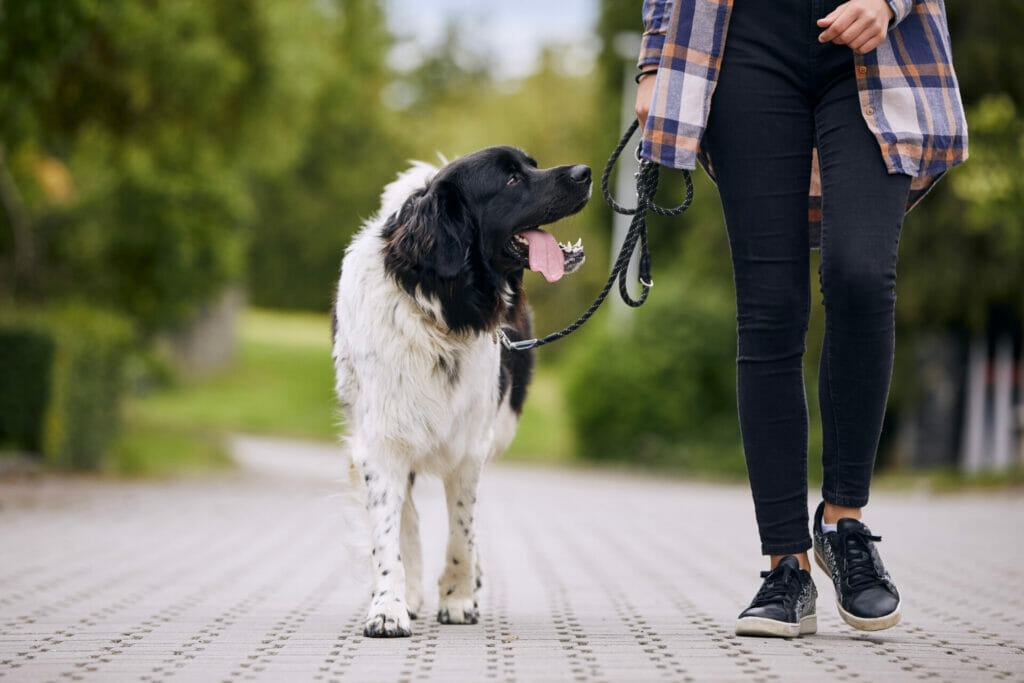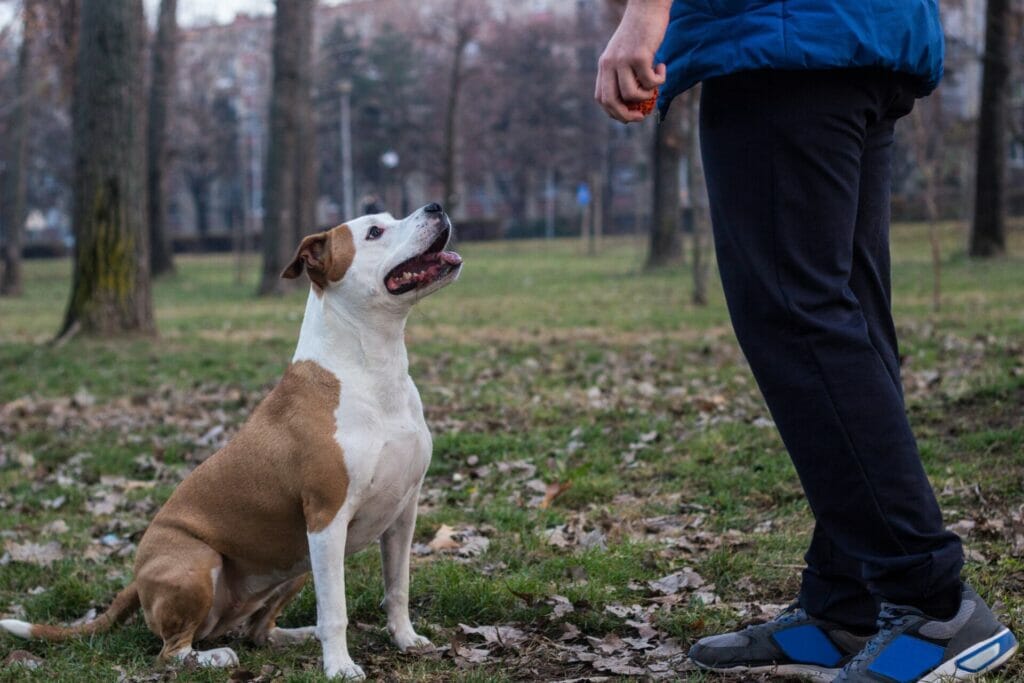Most of us want to have obedient dogs who follow our cues and who we can take anywhere dogs are allowed. Although we might have a picture in our mind of how we want our dogs to be, our dogs don’t come pre-programmed knowing how to respond to cues, let alone in distracting public spaces. If you want your dog to respond to your signals while in public, you’ll need to work up to busy areas slowly. Here are tips for how to help your dog to be obedient while going to public spaces with you.
Bring the right supplies:
When you bring your dog out in public, you’ll want to prepare with the right supplies. When bringing your dog out into a public space, bring a 6-foot leash so that your dog will always be close to you while you’re out. If you’re going to a beach or other public place with more space, consider bringing a long-line leash to give your dog more freedom to sniff and explore while keeping them near you.
You also should bring water and a collapsible water bowl to keep your dog comfortable and hydrated. Most importantly, be sure to fill your pockets or treat the pouch with dog treats and toys your dog is excited about. For bringing your dog into public spaces, it’s essential to have high-value treats. Following cues in distracting environments is hard for dogs, so we want to pay them well when they do good work in public.
Choose the right location:
If you want your dog to follow your cues when you are out in public together, it’s essential to start slowly to help your dog build up to being able to follow cues anywhere. Don’t just go to a busy street fair or crowded dog-friendly café, and expect your dog, who has seldom left your neighborhood, will be able to follow your cues accurately. When we teach a new skill to our dog, we want to teach that behavior in the least distracting environment possible – which, for most dogs, will be in your home. Then, as your dog masters that skill, you can ask your dog to perform a specific behavior in a slightly more distracting environment, like on a quiet street in front of your house.
The better your dog gets by doing cued behavior in an area with minimal distractions, you can build up to asking for that behavior in an area with even more distractions. Ideally, in the future, the goal is for your dog to be able to accompany you to any pet-friendly location and behave the way you want, following all your cues. But the key to getting the obedience you want is setting your dog up for success and only bringing them to locations where they can focus on you and your cues.

Slowly, build up to more distracting locations until your dog can succeed anywhere. Give your dog lots of praise and treats for following cues in public. Reinforced behavior is more likely to be repeated, so the more we reward our dogs for the behavior we like, the more they will repeat it.
Respect boundaries:
Being well-behaved and obedient in public places doesn’t mean that your dog needs to be the life of the party or social with everyone. Help your dog succeed by asking people not to allow their dogs to approach your dog or engage with your dog themselves. If you have a dog who is overly excited about greeting dogs or people or is weary, nervous, or uncomfortable being approached, it’s always ok to tell people “No” if they ask to say hello.
Holding boundaries with people around greetings makes a big difference in helping your dog to have good manners in public. Boundaries allow your dog to feel safe and gives them the space to focus on your desired behavior. Respecting your dog’s boundaries also helps to keep your dog focused on you and no other people or dogs, which will help your dog listen to your cues while in public.
Set your dog up for success:
Just like people, sometimes dogs have bad days as well. If you bring your dog out with you only to discover they are struggling to follow cues or their body language tells you they are uncomfortable, instead of getting frustrated, just cut the outing short. Bringing your dog back home or going to a less distracting area doesn’t mean you and your dog failed that day; it’s about helping your dog succeed today, so you can build on those skills somewhere more distracting another time.
In general, if you find that your dog is struggling to follow your cues while you are out and about, it’s a clue that either your dog isn’t ready for that level of distraction or, for whatever reason, the location is too difficult for your dog that day. When considering bringing your dog, remember to be kind to yourself and your dog by being realistic if a public place will be fun, enriching, and successful for your dog. If the location is beyond what your dog can handle, plan to take your dog to walk somewhere else instead.
Not every dog can go out in public or to every event. Being obedient or following cues and having polite manners in public spaces is challenging for our dogs because there are so many other sights, sounds, and smells to focus on. Building up our dog’s understanding of specific behaviors first in low-distracting environments will help your dog eventually handle going with you and following cues in more distracting environments.




















